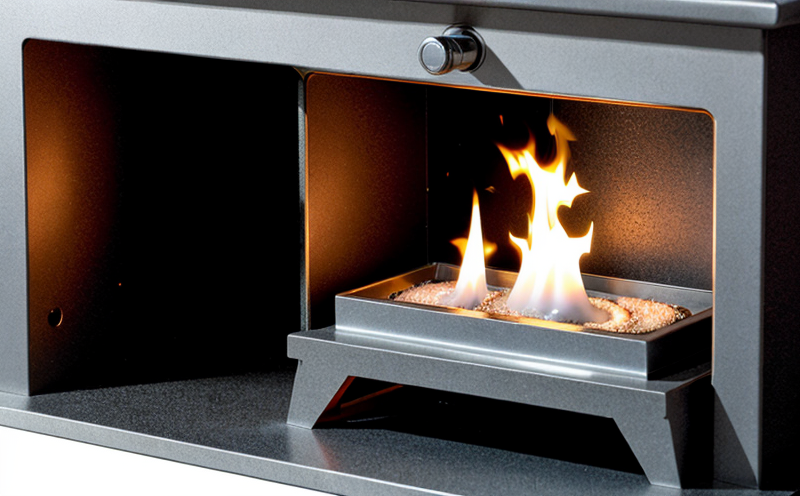Ignitability Testing of Electrical Components
The ignitability testing of electrical components is a critical aspect in ensuring fire safety and compliance with various international standards. This service evaluates the ignition and flame spread characteristics of materials used in electrical devices, providing essential data for product design and quality assurance.
In this process, we assess how easily an electrical component can catch fire under specific conditions. The testing helps to determine whether a component will ignite when exposed to heat or flame, which is crucial for preventing fires caused by faulty or substandard materials. This service is particularly important in sectors like consumer electronics, automotive, and aerospace.
The testing method involves exposing the electrical components to controlled environments that simulate real-world conditions. The specimens are placed on a standardized horizontal surface where they can be subjected to ignition sources such as open flames, electric arcs, or hot wires. The test measures how long it takes for the component to ignite and the rate at which it spreads across its surface.
The results of these tests provide valuable insights into the flammability properties of electrical components. These data are used by manufacturers to make informed decisions about material selection and design improvements, ensuring that their products meet stringent safety regulations and customer expectations.
Our laboratory uses state-of-the-art equipment and adheres strictly to international standards such as IEC 60332-1 (Flame Retardancy Tests for Electrical Insulating Materials). This ensures the accuracy and reliability of our testing results. Our team of experts can provide detailed reports that include recommendations on how to improve the fire safety performance of your electrical components.
By incorporating ignitability testing into your quality control processes, you can enhance the overall product safety and reduce the risk of fires due to faulty or combustible materials. This service is not only beneficial for manufacturers but also for distributors who want to ensure that they are selling compliant products.
Scope and Methodology
The scope of ignitability testing encompasses a wide range of electrical components, including circuit boards, connectors, wires, and other materials used in the manufacturing process. The primary goal is to evaluate the ignition source sensitivity, flame spread rate, and self-extinguishing behavior of these materials.
- Specimen Preparation: Components are prepared according to specified dimensions and conditions outlined by relevant standards.
- Ignition Source: Various ignition sources such as an open flame, hot wire, or electric arc are used to initiate the test.
- Testing Environment: Tests are conducted in a controlled environment that simulates real-world conditions.
The methodology involves placing the specimens on a standardized horizontal surface and subjecting them to controlled ignition sources. The rate at which the flame spreads across the specimen is measured, and the time taken for self-extinguishment is recorded. Additionally, we capture video footage of the test process to provide detailed visual documentation.
Our laboratory uses advanced equipment such as cone calorimeters and vertical flame testers to ensure accurate measurements. The testing procedure adheres strictly to international standards like IEC 60332-1, which provides a standardized approach for evaluating the ignition behavior of materials used in electrical components.
The results of these tests are presented in comprehensive reports that include detailed descriptions of the test conditions, specimen characteristics, and performance metrics. These reports also provide recommendations on how to improve the fire safety performance of your products.
International Acceptance and Recognition
The ignitability testing of electrical components is widely recognized by regulatory bodies and industry standards organizations around the world. Compliance with these regulations ensures that manufacturers meet international quality and safety requirements, thereby enhancing product reliability and customer confidence.
Our laboratory adheres to a number of internationally accepted standards such as IEC 60332-1 for flame retardancy tests on electrical insulating materials. This standard provides guidelines for testing the ignition behavior of materials used in electrical components, ensuring that they meet stringent safety requirements.
The test results are widely accepted by regulatory bodies and industry organizations, including the International Organization for Standardization (ISO) and Underwriters Laboratories (UL). Compliance with these standards is a prerequisite for product certification and market entry. Our laboratory provides detailed reports that include recommendations on how to improve the fire safety performance of your products.
By incorporating ignitability testing into your quality control processes, you can enhance the overall product safety and reduce the risk of fires due to faulty or combustible materials. This service is not only beneficial for manufacturers but also for distributors who want to ensure that they are selling compliant products.





